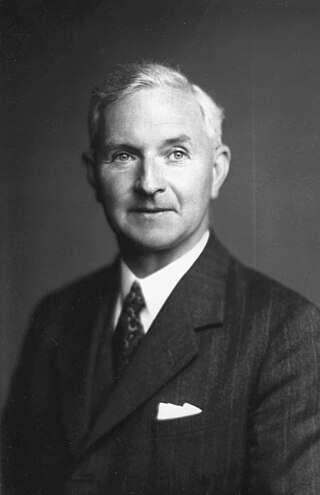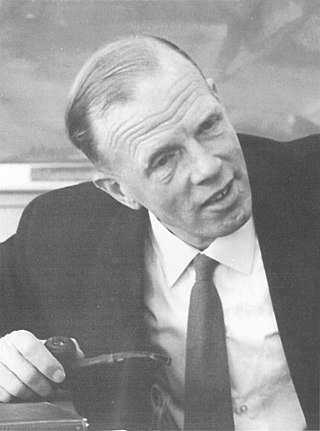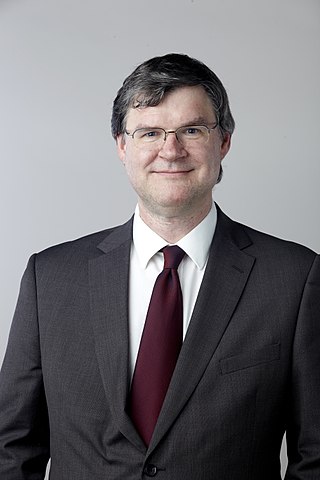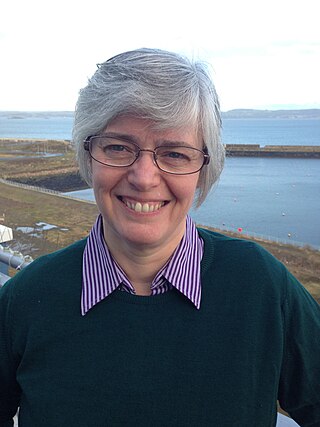Related Research Articles
Atomic, molecular, and optical physics (AMO) is the study of matter-matter and light-matter interactions; at the scale of one or a few atoms and energy scales around several electron volts. The three areas are closely interrelated. AMO theory includes classical, semi-classical and quantum treatments. Typically, the theory and applications of emission, absorption, scattering of electromagnetic radiation (light) from excited atoms and molecules, analysis of spectroscopy, generation of lasers and masers, and the optical properties of matter in general, fall into these categories.

The Cavendish Laboratory is the Department of Physics at the University of Cambridge, and is part of the School of Physical Sciences. The laboratory was opened in 1874 on the New Museums Site as a laboratory for experimental physics and is named after the British chemist and physicist Henry Cavendish. The laboratory has had a huge influence on research in the disciplines of physics and biology.

Sir John Edward Lennard-Jones was a British mathematician and professor of theoretical physics at the University of Bristol, and then of theoretical science at the University of Cambridge. He was an important pioneer in the development of modern computational chemistry and theoretical chemistry.

Gerhard Heinrich Friedrich Otto Julius Herzberg, was a German-Canadian pioneering physicist and physical chemist, who won the Nobel Prize for Chemistry in 1971, "for his contributions to the knowledge of electronic structure and geometry of molecules, particularly free radicals". Herzberg's main work concerned atomic and molecular spectroscopy. He is well known for using these techniques that determine the structures of diatomic and polyatomic molecules, including free radicals which are difficult to investigate in any other way, and for the chemical analysis of astronomical objects. Herzberg served as Chancellor of Carleton University in Ottawa, Ontario, Canada from 1973 to 1980.

Sir Nevill Francis Mott was a British physicist who won the Nobel Prize for Physics in 1977 for his work on the electronic structure of magnetic and disordered systems, especially amorphous semiconductors. The award was shared with Philip W. Anderson and J. H. Van Vleck. The three had conducted loosely related research. Mott and Anderson clarified the reasons why magnetic or amorphous materials can sometimes be metallic and sometimes insulating.

Philip Burton Moon FRS was a British nuclear physicist. He is most remembered for his research work in atomic physics and nuclear physics. He is one of the British scientists who participated in the United States' Manhattan Project, Britain's Tube Alloys, and was involved in nuclear weapon development. Moon made outstanding and original experimental contributions which stimulated the development of whole fields of research involving neutrons, gamma rays and novel methods of studying chemical reactions.

David James Thouless was a British condensed-matter physicist. He was the winner of the 1990 Wolf Prize and a laureate of the 2016 Nobel Prize for physics along with F. Duncan M. Haldane and J. Michael Kosterlitz for theoretical discoveries of topological phase transitions and topological phases of matter.

Richard Henderson is a British molecular biologist and biophysicist and pioneer in the field of electron microscopy of biological molecules. Henderson shared the Nobel Prize in Chemistry in 2017 with Jacques Dubochet and Joachim Frank.

Tiruppattur Venkatachalamurti Ramakrishnan is an Indian theoretical physicist known for his contributions in condensed matter physics. He is at present DAE Homi Bhabha Professor of Physics at Benaras Hindu University and also the chancellor of Tripura University.

David George Charlton is Professor of Particle Physics in the School of Physics and Astronomy at the University of Birmingham, UK. From 2013 to 2017, he served as Spokesperson of the ATLAS experiment at the Large Hadron Collider at CERN. Prior to becoming Spokesperson, he was Deputy Spokesperson for four years, and before that Physics Coordinator of ATLAS in the run-up to the start of collision data-taking.

Dame Pratibha Laxman Gai-Boyes is a British microscopist and Professor and Chair of Electron Microscopy and former Director at The York JEOL Nanocentre, Departments of Chemistry and Physics, University of York. She created the atomic-resolution environmental transmission electron microscope (ETEM) and is an outspoken advocate for women with careers in science.

Eleanor Elizabeth Bryce Campbell FRSE FRS FRSC FInstP is a Scottish scientist who holds the Chair of Chemistry at the University of Edinburgh.
Charles Jonathan Penrose Tennyson is a British physicist. He is the Massey Professor of Physics and Head of department at the Department of Physics and Astronomy, University College London (2004–11). Chief Scientist Quantemol Ltd and chair, Blue Skies Space Ltd.

Sir Steven Charles Cowley is a British theoretical physicist and international authority on nuclear fusion and astrophysical plasmas. He has served as director of the United States Department of Energy (DOE) Princeton Plasma Physics Laboratory (PPPL) since 1 July 2018. Previously he served as president of Corpus Christi College, Oxford, since October 2016. and head of the EURATOM / CCFE Fusion Association and chief executive officer of the United Kingdom Atomic Energy Authority (UKAEA).
Evan James Williams FRS was a Welsh experimental physicist who worked in a number of fields with some of the most notable physicists of his day, including Patrick Blackett, Lawrence Bragg, Ernest Rutherford and Niels Bohr.
Peter Nicholas Pusey is a British physicist. He is an Emeritus Professor of Physics at the School of Physics and Astronomy of the University of Edinburgh.
Gerhard Theodor Materlik is a German physicist and science manager. He has made significant contributions to X-ray physics, notably improvements in the real-world application of synchrotron radiation. He is a Professor of Facilities Science at the University College London since 2013.
Robin Marshall is an Emeritus professor of Physics & Biology in the School of Physics and Astronomy at the University of Manchester.

Timothy Peter Softley is Pro-vice-chancellor (PVC) for research and knowledge transfer at the University of Birmingham.
The I. I. Rabi Prize in Atomic, Molecular, and Optical Physics is given by the American Physical Society to recognize outstanding work by mid-career researchers in the field of atomic, molecular, and optical physics. The award was endowed in 1989 in honor of the physicist I. I. Rabi and has been awarded biannually since 1991.
References
- ↑ Prof Frank Read, FRS Authorised Biography, retrieved 2016-03-14.
- 1 2 3 "Frank Read". London: Royal Society. One or more of the preceding sentences may incorporate text from the royalsociety.org website where "all text published under the heading 'Biography' on Fellow profile pages is available under Creative Commons Attribution 4.0 International License." "Royal Society Terms, conditions and policies". Archived from the original on 20 February 2016. Retrieved 9 March 2016.
{{cite web}}: CS1 maint: bot: original URL status unknown (link) - ↑ "Manchester Physics and Astronomy". www.hep.manchester.ac.uk. Retrieved 14 March 2016.